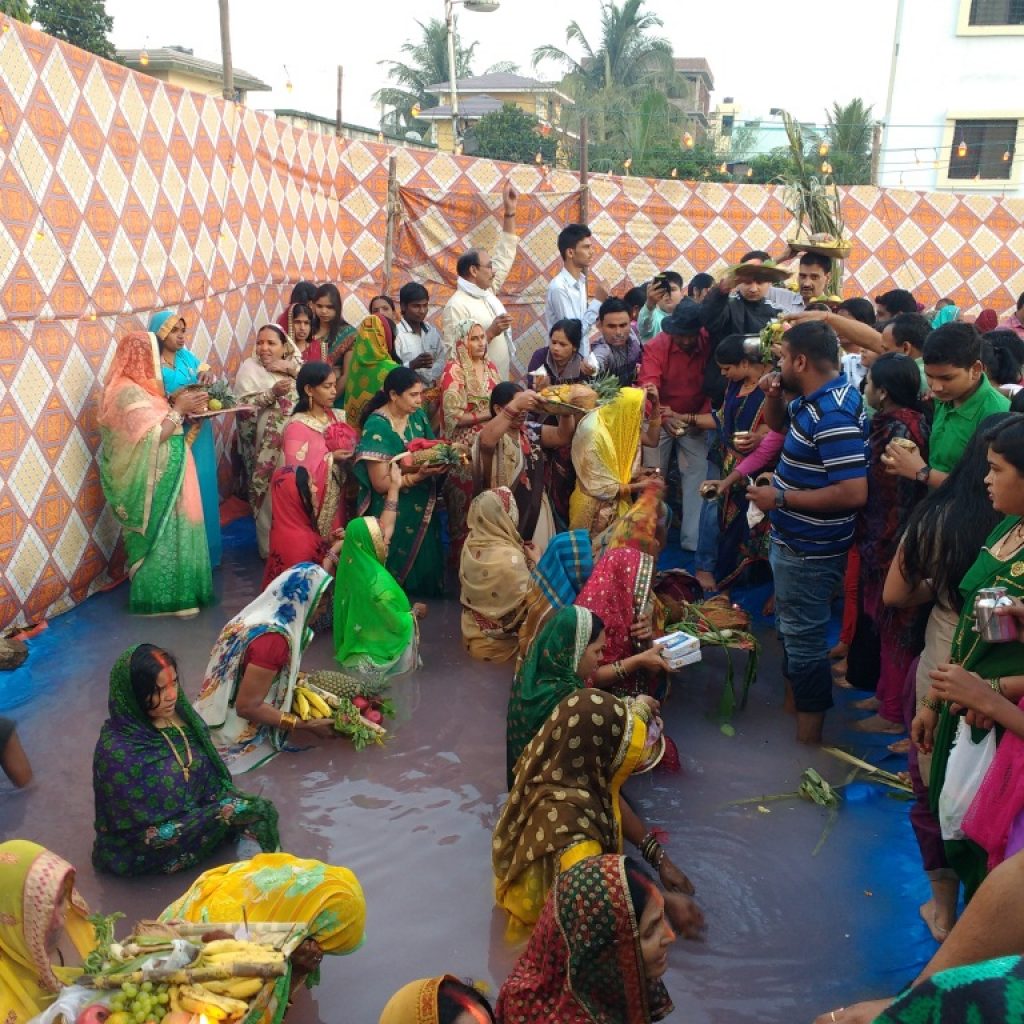Chhath Puja: A Spiritual Celebration of Sun and Tradition

Aryan Agarwal
Pune, 16th November 2023: Chhath Puja, a significant Hindu festival, unfolds its rituals and celebrations between October and November, following closely on the heels of Diwali. This year, devotees will observe Chhath Puja from 17th to 20th November. The vibrant festivities are most fervently embraced in the states of Bihar, Jharkhand, and Uttar Pradesh.
Chhath Puja is a reverence to Surya (Sun God) and Chhathi Maiya, reflecting a profound spiritual connection.
Quoting Sakshi Jha from Quora, she emphasizes, “The Sun is the life source for every creature on Earth, making this festival a universal tribute to the life support system, transcending caste, creed, gender, and social stigmas.” The festival commemorates both the sunrise and sunset, symbolizing the appreciation for the highs and lows in our lives.
The four-day festival begins with ‘Nahay Khay,’ where devotees cleanse themselves and prepare Prasad (food offerings). This day marks the commencement of cleaning and decoration, accompanied by a traditional meal featuring Kaddu ke Pakode (pumpkin fritters), Gobi ke Pakode (cauliflower fritters), Chawal (rice), Dal, and Allu ki Sabzi (potato dish). Non-vegetarian dishes, onions, and garlic are strictly prohibited. The second day sees devotees organizing Bhandara (community feast), serving food to everyone, known or unknown. Kheer (rice pudding) is a highlight, sweetened with jaggery, and salt is omitted in the food preparation. The sweets, collectively known as ‘Thekua,’ add a sweet touch to the celebrations.
Worship of the Sun and Chhathi Maiya spans all four days, accompanied by soulful songs sung by devotees. While the Puja can be conducted by any family member, it is predominantly led by women. Other family members seek blessings from the one performing the Puja.
Sejal Singh from Bihar shares, “Chhath Puja is a family tradition, passed down from one member to another. It continues within the family unless a change is necessitated due to age or illness.”
Devotees observe a rigorous fast of up to 36 hours during the festival. The third and fourth days witness the offering of Arghya to the Sun. The ritual involves the devotee entering a water body with a Batta (basket) on their head, presenting offerings to the Sun. The offerings range from fruits to jewelry, accompanied by family members sprinkling water and milk on the devotee during the rounds.
While Arghya is traditionally performed in the Ganges, it can be conducted in any water body for convenience, with Gangajal (water from the Ganges) added. The third day sees Arghya offered to the setting Sun, and the fourth day to the rising Sun. Devotees break their fast after the fourth-day Arghya.
On the concluding day, children ritually rub their mother’s saree on their faces to dispel any negative energy. Chhath stands out as a unique Hindu festival, devoid of idol worship and largely organized by the people rather than priests. Although predominantly led by women, anyone in the family can participate. The festival encourages inclusiveness and brotherhood, with no strict restrictions on Arghya offerings. As Sakshi points out, the list of blessings and joy is endless, making Chhath a celebration of devotion and unity.
Chhath Puja Special: Thekua Recipe – A Culinary Journey to Bihar’s Rich Culture





